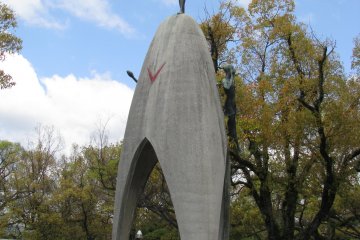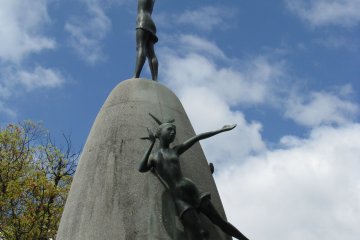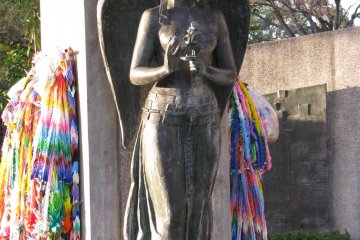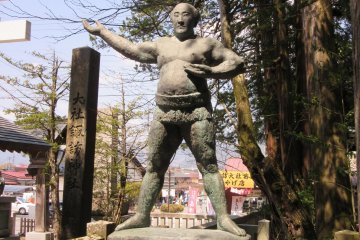I like artistic statues that picture human beings and animals. I take a photo of such statues whenever I come across them though I can’t say there are too many of them in Japan.
One of the most memorable was the monument to children who died after the atomic bomb tragedy in Hiroshima. A girl on a bell with an open-work crane raised above her head, the image is based on the true story of Sasaki Sadako who was dying from radiation sickness. Hoping to recover, Sadako folded origami tsuru cranes, but couldn’t accomplish the thousand that she believed would heal her. Near the base are garlands of thousands of colourful tsuru called known as senbazuru. A similar statue in Hiroshima, is dedicated to the students who also died in that tragedy. It, too, has senbazuru that people continue to bring…
Sumo is the most important competitive wrestling sport in Japan but at the same time it is not just a sport. A kind of martial art with a very deep history, sumo is filled with Shinto rituals and traditions. I came across monuments to wrestlers in the sumo district of Tokyo Ryogoku and at Suwa Taisha.
In Kyoto, near Kamo River, stands a monument to Izumo no Okuni marking the 400th anniversary of kabuki theatre. Izumo no Okuni started to perform a new style of a dance and gathered together a female troupe in the early 1600s which eventually transformed into a dramatic art featuring only male actors.
I also came across monuments depicting popular crafts or characters. The Tohoku region is famous for its wooden kokeshi dolls. Once used as toys, they are now decorations and collectables. Naruko is well known for its kokeshi dolls and make for good souvenirs from Naruko onsen. I also saw a very large kokeshi statue in Sendai's Higashi Park.
In Sendai I often came across a very popular anime and manga cute character called Anpanman, a bun who was a superhero... The statues were small but notable. I recall the huge statue of the robot soldier from the Hayao Miyazaki film, Laputa: Castle in the Sky at the Ghibli Museum.
In Odaiba, my friend who had never been to New York, pointed to the Statue of Liberty standing there and asked if it was like the statue in New York. Well, yes, it was but seven times smaller than the one in New York!
Finally, I came across traditional images such as a humble Buddhist monk collecting donations, a little girl in kimono and a fountain of koi (carps). Others were simply funny and puzzling, but in whole all those statues were artistic and interesting!


























